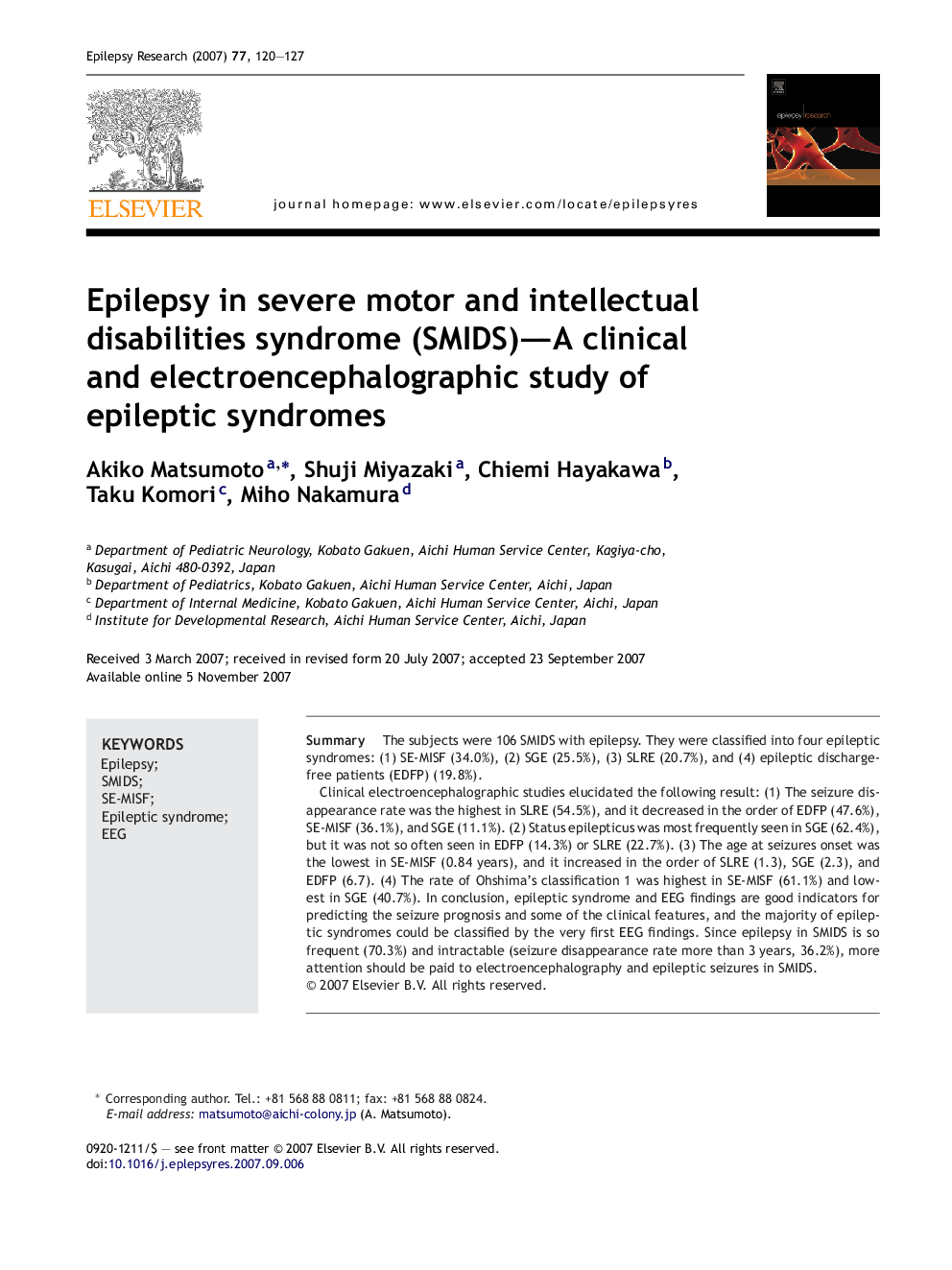| Article ID | Journal | Published Year | Pages | File Type |
|---|---|---|---|---|
| 6016434 | Epilepsy Research | 2007 | 8 Pages |
Abstract
Clinical electroencephalographic studies elucidated the following result: (1) The seizure disappearance rate was the highest in SLRE (54.5%), and it decreased in the order of EDFP (47.6%), SE-MISF (36.1%), and SGE (11.1%). (2) Status epilepticus was most frequently seen in SGE (62.4%), but it was not so often seen in EDFP (14.3%) or SLRE (22.7%). (3) The age at seizures onset was the lowest in SE-MISF (0.84 years), and it increased in the order of SLRE (1.3), SGE (2.3), and EDFP (6.7). (4) The rate of Ohshima's classification 1 was highest in SE-MISF (61.1%) and lowest in SGE (40.7%). In conclusion, epileptic syndrome and EEG findings are good indicators for predicting the seizure prognosis and some of the clinical features, and the majority of epileptic syndromes could be classified by the very first EEG findings. Since epilepsy in SMIDS is so frequent (70.3%) and intractable (seizure disappearance rate more than 3 years, 36.2%), more attention should be paid to electroencephalography and epileptic seizures in SMIDS.
Keywords
Related Topics
Life Sciences
Neuroscience
Neurology
Authors
Akiko Matsumoto, Shuji Miyazaki, Chiemi Hayakawa, Taku Komori, Miho Nakamura,
